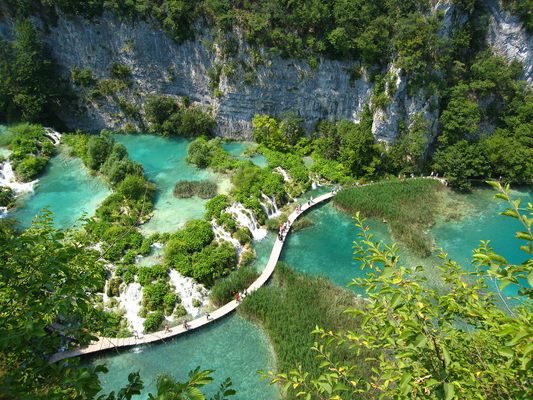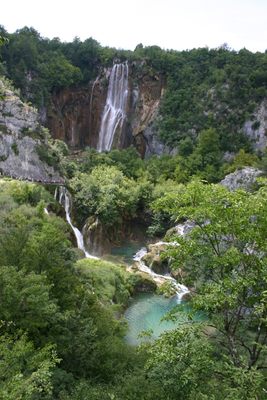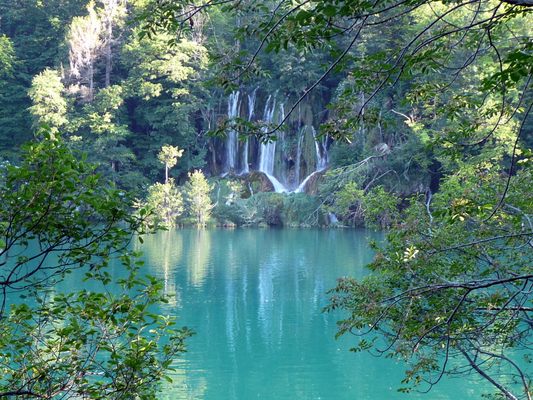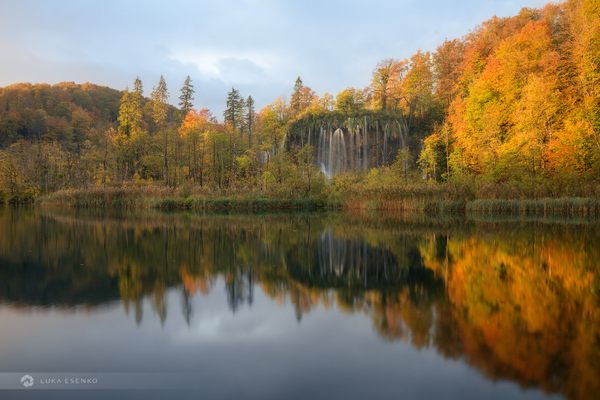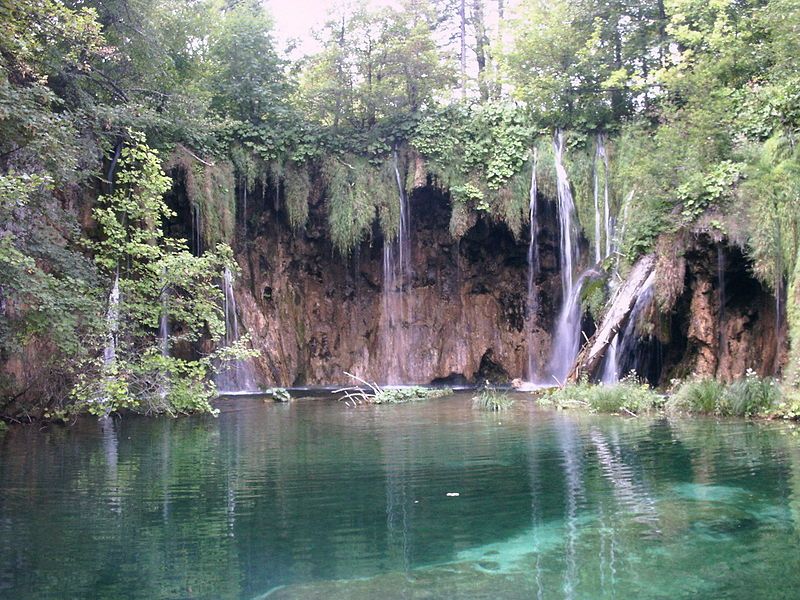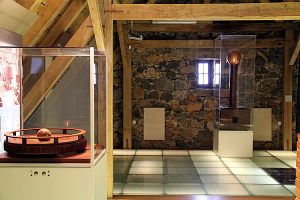About
Karst is not a particular kind of rock, but rather the landscape that results from the combination of certain types of rock, often limestone or dolomite, and water. The important element is that these types of rock are all soluable in water.
Put this type of rock in combination with water and over the years the water works its way through the rock and leads to all sorts of natural wonders. This type of geographical landscape is known as "karst topography" and is the basis of some of the most visually amazing geographical locations in the world.
Most of stone foundation of the Balkan peninsula is made of thick deposit of limestone accumulated over eons. Together with the areas abundance of springs, rivers and lush vegetation it has created some spectacular and Eden-like environments.
Plitvice lakes in Croatia is a series of 16 mountain lakes formed thanks to one such phenomenon. Travertine is a special kind of limestone which accumulates from calcium carbonate rich surface waters on the surface of living moss, forming growing barriers, and creating a chain of lakes and waterfalls. In an epic race, on a timescale of many thousands of years, the water wears away at the underlying limestone at the same time as the travertine barriers grow at pace of up to 1cm per year, creating an ever morphing, growing, reducing landscape.
The whole region of Plitvice is a national park, and the plitvice lakes are one of the main attractions of the inland part of Croatia, situated in Lika region of Croatia, in the midst of the Dinaric Alps. The lakes are divided into the 12 Upper Lakes (Gornja jezera) and the four Lower Lakes (Donja jezera).
While the national park is quite safe, don't wander too far from the paths. The UNESCO recognized park was the site of the first skirmish between Serbia and Croatia during the Balkan wars and landmines were planted throughout. Though it was certified mine-free in 1998, (Croatia has worked extremely hard to demine the country) it is believed there may still be a few errant landmines in some of the more remote areas of the park.
Related Tags
Know Before You Go
Buses between Zagreb and Zadar or Split will stop at the entrance to the National Park if you ask the driver beforehand.
Balkans Road Trip: Serbia, Croatia & Bosnia and Herzegovina
Traverse the beauty and history of the Balkans through locals' stories.
Book NowCommunity Contributors
Added By
Published
January 5, 2010
Sources
- http://www.np-plitvicka-jezera.hr/eng/index.php?option=com_content&task=view&id=12&Itemid=27
- http://en.wikipedia.org/wiki/Plitvice
- The park was inscribed on the UNESCO World Heritage List in 1979 in recognition of its "outstanding natural beauty, and the undisturbed production of travertine (tuff) through chemical and biological action".
- http://jetsettingfools.com/visit-plitvice-lakes-autumn-photo-essay/
